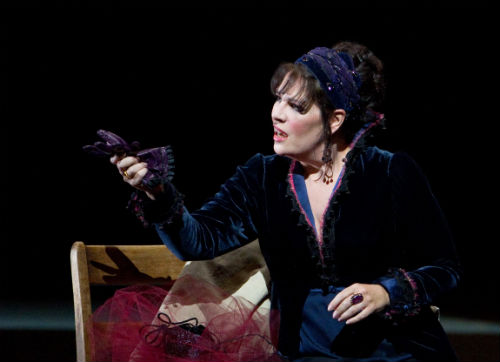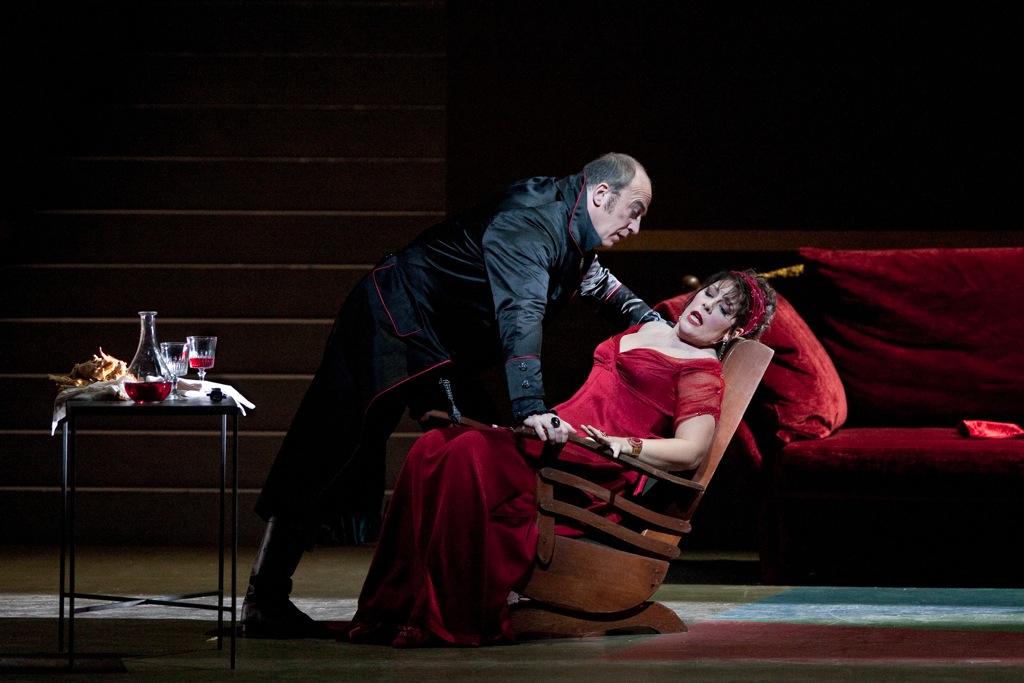By James Jorden
Garson Kanin wrote this novel a clef called Smash, a tale of a ruggedly handsome director’s trials in getting ready for Broadway a musical based on the life of a legendary vaudeville star, featuring a difficult young diva in the leading role—well, as you can see, the clef is pretty much a skeleton key, since among Kanin’s many credits was his helming of the original production of Funny Girl starring Barbra Streisand. My dog-eared copy of this sex-and-scandal potboiler disappeared about five moves ago, but I remember there was one line that should be inscribed over the doorway to every rehearsal room in every theater in the world.
The show is out of town, and they’re making big sweeping changes to the book, the lyrics, the running order, everything, and the show is still a mess. Someone helpfully offers, “But the show is getting better.” And the director’s reply is (as I recall it) “A show can get better for a long time without ever getting good.”
That’s more or less what’s happened to Luc Bondy‘s Tosca, as revived this season at the Met. On January 10, a lot of the “problems” everyone’s been fuming about for more than a year were, well, addressed. I won’t say “solved,” because in some cases the fixes are just as bad as the original gaffes, and in a couple of cases, worse.
The good: lighting levels across the board are higher, so much so, in fact, that the first act now seems to be taking place inside an industrial loft outfitted for a photo shoot. There is glaring white light where it’s needed, then, moments later, the whole stage goes dim and grey. But, if the effect lacks consistent atmosphere, there’s the practical advantage that you can almost always see the singers’ faces. (Or I should say that this is almost always a practical advantage, because Sondra Radvanovsky’s Tosca might be heard to better advantage without the distraction of all the grimaces she pulls.)

A few nagging details are cleaned up. For example, the rope Angelotti uses to rappel down the wall of Sant’Andrea gets pulled offstage with his exit; thus Scarpia’s crack team of police detectives no longer have to act as if this unexplained mountain-climbing equipment probably doesn’t have anything to do with the escaped prisoner they’re tracking. It’s nice that this howler is gone now, but should it really have taken a whole season’s run to discover it?
Bondy has also toned down considerably the final image of the first act, the notorious moment when Scarpia violently embraces the statue of the Madonna. I appreciate the point that it must have been no fun hearing half the audience yell “Ewww!” at the climax of the Te Deum, but it does seem like this is a band-aid on a gaping wound. Unchanged is the procession—or what looks like it should be the procession—to the altar, which consists of a lot of unenthusiastic supers in ecclesiastical drag shambling as slowly as they know how downstage, taking care not to stumble over the several level changes that have to be traversed. Bondy (or whoever choreographed this scene) doesn’t exaggerate enough to make the scene look expressionistic, but doesn’t offer enough believable detail to make it seem like a realistic take.
It just looks clumsy—particularly the acoltyes who shove their way through the throng with the Madonna statue, in a rush to set it down right next to Scarpia. There’s no pretense that this movement is in any way organic to the procession; rather, it baldly is done for the technical reason that the statue has to be handy to Scarpia for molesting (or, this season, for polite introductions) and the baritone is too busy singing to be asked to move to where the statue might plausibly be.
This “efficiency” borders on the type of camp stagings that were devised for Montserrat Caballe in the 1980s, when the soprano couldn’t be expected to keep track of such minutiae as props. If the scene called for a fan or a glass of wine or a diamond bracelet, a super would be stationed nearby with the necessary item to hand off to the diva “on demand” and then to retrieve once she had no more use for it.
What’s happened with some of the other “Bondy bits” is that they’re either watered down or else so robbed of context that they become non sequiturs. The trio of hookers hanging around Scarpia’s office at the top of the second act last season seemed at least sinister if a bit actressy; now they pose and prance enough to put over “Master of the House.” What previously seemed to hint, however clumsily, at Scarpia’s conflicted sexuality now seems like so much gratutious T&A.

On the up side, the final leap works (just); on the down side, the pantomime closing the second act still is badly timed. Last season, Karita Mattila‘s commitment and charisma distracted from the obvious fact that she had too much music and not enough to do; now, Radvanovsky just looks impatient at having to wait so long for the cue to start fanning.
Again, the problem with this Tosca is not (and, really never was) that it was so luridly shocking or blatantly at odds with the text; rather, the production is for the most part dull and routine, failing to illuminate the work in any new or interesting way. When the most striking acting performance in the whole show issues from a tenor who jumped in with barely enough time to get his costumes fitted, there’s something wrong with how the Met does Tosca.
(Photos: Marty Sohl/Metropolitan Opera)
Tags: barbra streisand, garson kanin, karita mattila, lighting, luc bondy, montserrat caballe, regie, the met